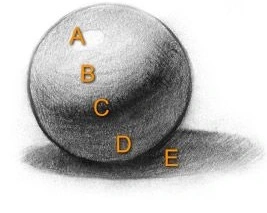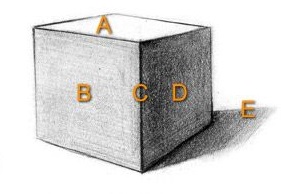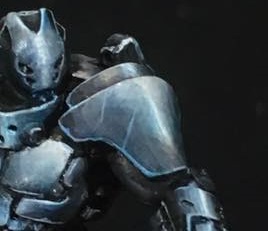Welcome to another Pirate Monkey Basics article! Today we talk about basic shapes and how light interacts with them. This is a very basic concept but it isn’t always something that is talked about frequently when teaching figure painting beginners or even painters that have been at it a while. This was a game changer for me!
The more we study and master these basics the better and faster out painting will become. Even if you are a speed painter this information can be useful! So with all that said let’s jump in!
You can find the next part on glazing here and all of the other tutorials here!
If you liked this article and want to see more in depth tutorials come check out Pirate Monkey Painting’s Patreon!

The basics of these principles are that there are 3 basic shapes that compose all shapes in one way or another. These shapes are highlighted and shaded in similar ways across the board. This means less time trying to figure out how to highlight or shade objects on your figure! Another important concept that goes along with this is that your subjects larges general shapes need to follow these basic lighting concepts before the specific intricate details get attention.
The three basic shapes are Spheres, cylinders and Squares.
Spheres as you can see below are balls or any part of the sphere cut off. A. Generally the highlight will match the shape meaning for spheres there will be a round. (B-C.). The midtones and shadows and then on the bottom there will be a bounce light (D.). If the material is somewhat reflective the highlight shape will then match its source meaning if there is light coming from a window it will then be square. But because miniatures are generally so small this is not a concern, the same goes for bounce light. This can change though when working on busts as they are large enough to paint this more complex lighting.

Next up is cylinders this shape has a rounded surface that wraps all around two circles on the sides that are flat. These have a linear highlight that follows along the center (A.) shadows and highlights follow the same pattern (B.-C.) with bounce light behind(D.). this shape is extremely common as it applies to the majority of the shapes the body is composed of, arms legs torso fingers.

Lastly we have the square shape. This one is unique because it is composed of flat planes. The most basic lighting on a square is that one plane is the brightest (A.) the next planes closest are a step down in light (B.) and then the back planes are the darkest (C.). Now many of you are thinking what about gradients? Gradients are specific to the lighting situation and material. They are also compositional tools that can direct focus. As talked about above get the general before the specific.

So now that we have gone over the three most basic shapes what about all the rest? The weird quirky interesting shapes, Or even things that are really complex like the face?
Always start with what the shape most closely resembles. Here are some examples for each.
This infinity miniatures shoulder pad. its this weird triangular curved shape. It’s not a sphere though and it’s not flat so it must be a cylinder, or its at the very least cylindrical.

Swords are another good example it’s not round and it’s not cylindrical. So let’s treat it like a plane. I added a gradient here because I wanted the viewer to know that it’s a reflective material and also to push the eye back to the figure and to also ask what is the weapon being pointed at?

Lastly there’s spheres the best example I can think about is a Space Marine shoulder pad. Its got a odd shape but it doesn’t fall into the other two shapes, that means that its spherical. The natural highlight and the painted highlight look very similar as well so that means we are on the right track!

Lastly let’s talk about a complex shape like the human face. It is extremely intricate and unique. This is not you need to memorize but It would be beneficial if this was broken down. To start the front of the face is cylindrical and is attached to a spherical shape at the top. The eyes are of course round but are surrounded by a round cylindrical shape. the chin is spherical and the lips cylindrical. The top and side of the nose is flat and has two spherical shapes on the sides. Lastly the ears are composed of lots of combined cylinders.

So yes it’s complex but if we understand the basics it makes approaching this kind of complexity less intimidating! It gives order to what before was chaos.
That’s all for now! I hope this was helpful and if there are any questions feel free to ask!

4 thoughts on “Pirate Monkey Basics – Basic Shapes and Light.”